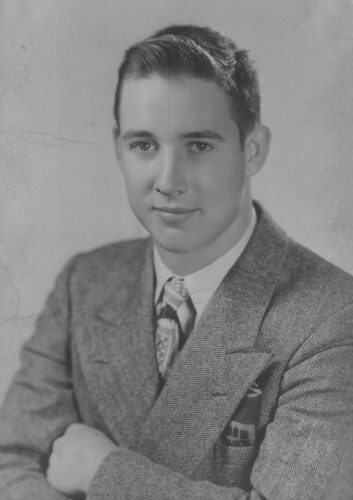Nava marks more than half-century as UAF student, employee, booster
October 14, 2019
Elizabeth Talbot
907-474-7081

In Fairbanks, Joe Nava is pretty much a household name, whether through his work as a gun safety instructor, as host of the local radio program “Shooters Corner,” or as the creator of the Youth Hunter Education Challenge.
What might not be so well known are Nava’s longtime ties to the University of Alaska Fairbanks — as a student, athlete, administrator and, as of 2009, a member of the Nanook Hall of Fame.
“The university set me up with two degrees,” said Nava, who has been affiliated with UAF for 56 years. “This helped in my earning power to take care of my family.”
Nava has enough stories to fill a book, something he accomplished last year when he penned an autobiography, “Not Your Average Joe,” with the help of his friend, Laura B. Berkowitz. All of the proceeds support the Joseph A. Nava Shooting Scholarship Endowment Fund, a UAF scholarship he helped endow more than 30 years ago.
Nanooks rifle coach Layne Lewis said that Nava’s ongoing roles as a rifle team booster and fan have left a lasting impression.
“Joe has been very influential with the university and our rifle program,” Lewis said. “The amount that Joe has done for the Nanooks is immeasurable.”
Nava moved from Massachusetts to Alaska in 1960, joined by his four children and a very pregnant wife, Grace. He was set on pursuing his dream of working as a biologist for the Alaska Department of Fish and Game.
He had written to wildlife departments in all 49 states before deciding on Alaska. The only other responses he received offered positions as a junior biologist. In Alaska, Nava was hired as a biologist, minus the junior, and sent to Tok to begin his work.
Although he thrived in that position, Nava knew he would never be promoted without a college degree. Nava and his family relocated to Fairbanks in 1961, where he could complete his undergraduate degree from the University of Alaska in wildlife management.

He was both a part-time employee for ADF&G, working 37 hours a week, and a full-time student. Because the Fish and Game headquarters was located on campus, Nava was able to work in the lab, run to class and then return to the lab to continue his work. He also shot for the rifle team for three seasons, serving as Blue and Gold captain and being named a first-team All-American.
After receiving his bachelor’s degree, Nava decided to also pursue his master’s degree at UAF, focusing on the reproductive cycles of lynx. When his research began, the population of wild hare, a main food source for the lynx, was low. As he set out to capture lynx specimens in the spring when they should be pregnant, he noticed that none of them had kits.
His research led to a better understanding of lynx reproduction. While a fox might continue to breed normally when food sources are scarce, a lynx will stop producing offspring until food sources return. Nava realized that a lynx will adapt in order to ensure her offspring will survive.
“I got letters from all over the world,” he said. “From biologists who wanted to ask questions and take off from what I had learned. I was the first one to realize that when the food source is short, the lynx don’t breed.”
During his thesis research, Nava held a full-time position at UAF’s Institute of Arctic Biology, where he remained until retirement. Since then, Nava has taught field safety classes to researchers each spring, including firearm and bear safety courses.


